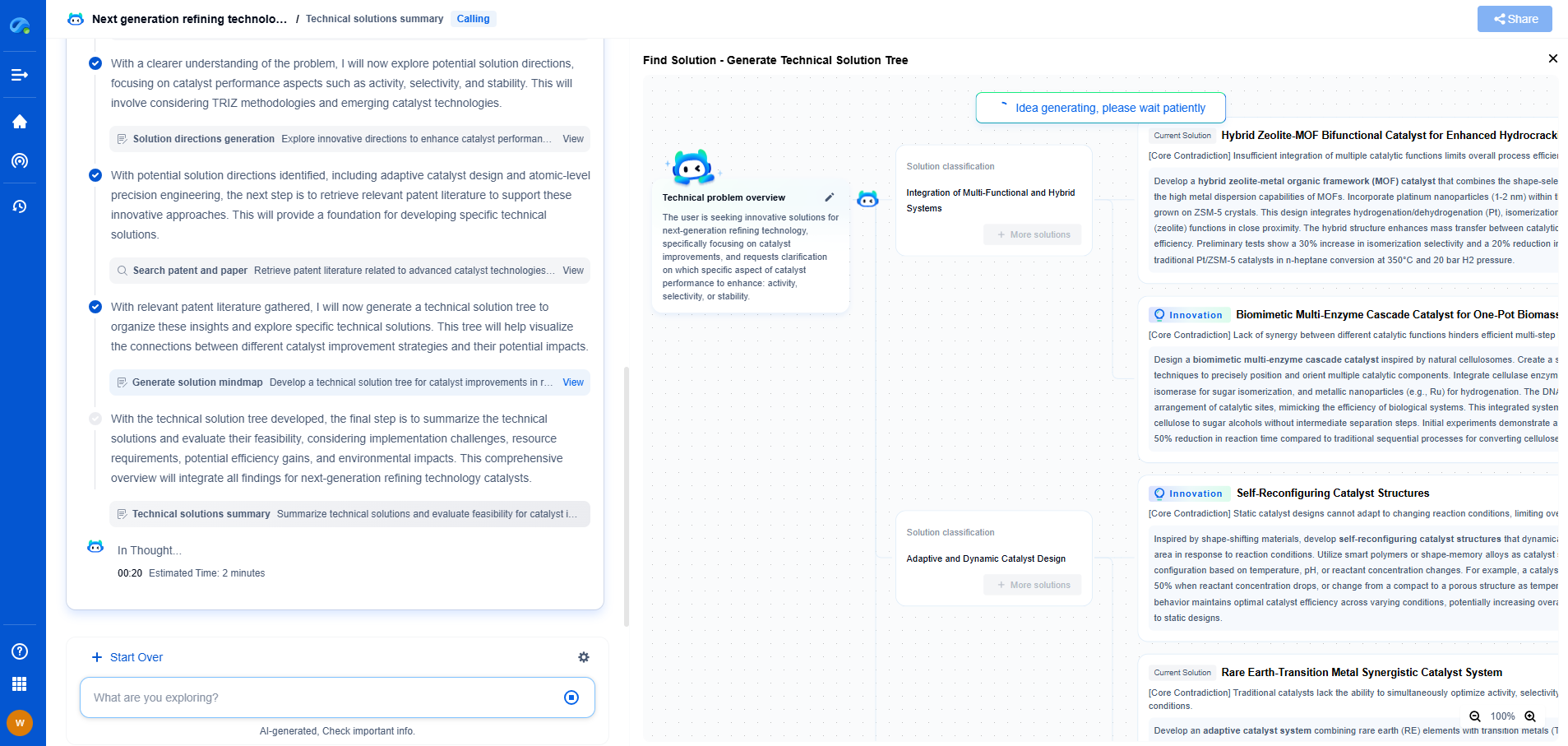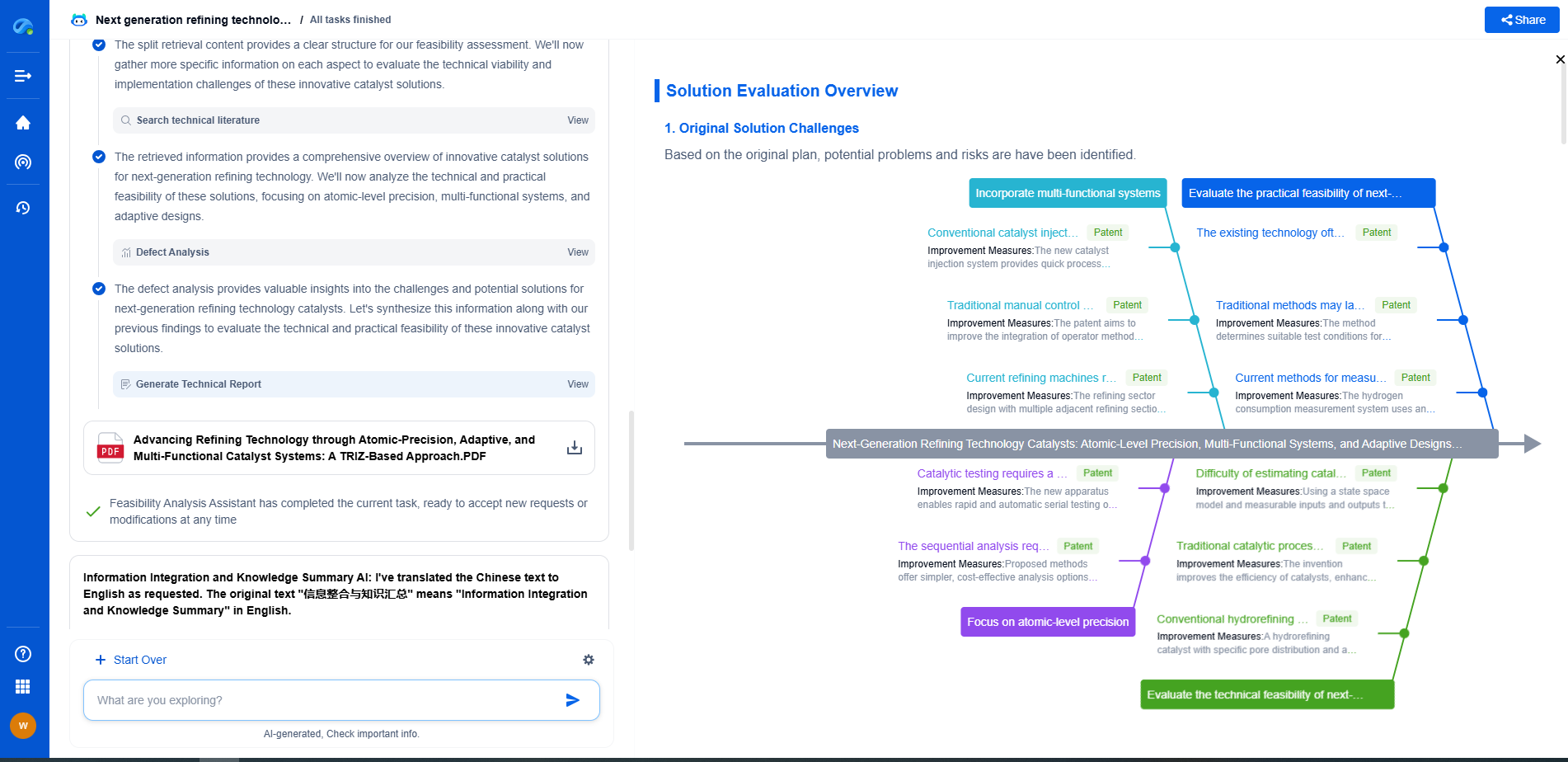Identifying and Fixing Cache Coherency Problems
JUL 4, 2025 |
Cache coherency is a critical problem in multiprocessor systems where each processor has its cache memory. In these systems, copies of shared data can reside in multiple caches simultaneously, leading to inconsistencies and unexpected behavior if one cache updates its copy without informing others. The challenge is to ensure that all processors have a consistent view of memory.
Symptoms of Cache Coherency Problems
Cache coherency issues often manifest as bugs that are hard to detect. Some common symptoms include data corruption, unexpected program outputs, and random crashes. These issues are particularly elusive because they may not appear in every execution of the program. They often depend on the timing of cache updates and accesses, making them hard to reproduce.
Common Causes of Cache Coherency Problems
1. **Write-Back Caches**: When a cache uses a write-back policy, modifications are initially made only in the cache and the main memory is updated later. If another cache reads the data before the main memory is updated, inconsistencies arise.
2. **Inadequate Synchronization**: Lack of proper synchronization mechanisms can lead to situations where multiple caches update shared data concurrently without coordination, leading to different values in different caches.
3. **False Sharing**: This occurs when threads on different processors modify distinct variables that reside on the same cache line. Even if the variables are independent, the entire cache line is marked as dirty, leading to unnecessary cache coherency traffic.
Identifying Cache Coherency Problems
1. **Debugging Tools**: Use debugging tools designed to detect concurrency issues. Tools like Valgrind, Intel Inspector, or specialized cache simulators can help spot cache coherency issues by analyzing memory access patterns and detecting inconsistencies.
2. **Code Review**: Carefully review code for potential concurrency issues. Look for variables shared between threads and ensure appropriate synchronization mechanisms like locks or atomic operations are employed.
3. **Profiling and Monitoring**: Profile the system to monitor memory access patterns and cache behavior. Identify hot spots where shared data is frequently accessed or modified by multiple threads.
Fixing Cache Coherency Problems
1. **Implementing Proper Synchronization**: Use mutexes, locks, or atomic operations to ensure that only one processor can update a shared variable at a time. This can prevent inconsistencies by serializing access to shared data.
2. **Adopting a Write-Through Policy**: In some cases, adopting a write-through cache policy, where writes are immediately reflected in the main memory, can mitigate coherency issues. However, this may impact performance due to increased memory traffic.
3. **Avoiding False Sharing**: Structure your data to avoid false sharing. This might involve padding structures so that frequently updated variables do not share a cache line.
4. **Cache Coherency Protocols**: Leverage hardware-supported cache coherency protocols like MESI (Modified, Exclusive, Shared, Invalid), which are designed to manage the state of each cache line and ensure coherency across processors.
Conclusion
Addressing cache coherency is essential for ensuring the reliability and performance of multiprocessor systems. By understanding the symptoms and causes of cache coherency problems, implementing robust debugging and monitoring strategies, and applying appropriate fixes, developers can mitigate these issues effectively. Emphasizing synchronization, carefully designing data structures, and leveraging hardware protocols are crucial steps in maintaining a consistent view of memory across processors.
Accelerate Breakthroughs in Computing Systems with Patsnap Eureka
From evolving chip architectures to next-gen memory hierarchies, today’s computing innovation demands faster decisions, deeper insights, and agile R&D workflows. Whether you’re designing low-power edge devices, optimizing I/O throughput, or evaluating new compute models like quantum or neuromorphic systems, staying ahead of the curve requires more than technical know-how—it requires intelligent tools.
Patsnap Eureka, our intelligent AI assistant built for R&D professionals in high-tech sectors, empowers you with real-time expert-level analysis, technology roadmap exploration, and strategic mapping of core patents—all within a seamless, user-friendly interface.
Whether you’re innovating around secure boot flows, edge AI deployment, or heterogeneous compute frameworks, Eureka helps your team ideate faster, validate smarter, and protect innovation sooner.
🚀 Explore how Eureka can boost your computing systems R&D. Request a personalized demo today and see how AI is redefining how innovation happens in advanced computing.
- R&D
- Intellectual Property
- Life Sciences
- Materials
- Tech Scout
- Unparalleled Data Quality
- Higher Quality Content
- 60% Fewer Hallucinations
Browse by: Latest US Patents, China's latest patents, Technical Efficacy Thesaurus, Application Domain, Technology Topic, Popular Technical Reports.
© 2025 PatSnap. All rights reserved.Legal|Privacy policy|Modern Slavery Act Transparency Statement|Sitemap|About US| Contact US: help@patsnap.com

